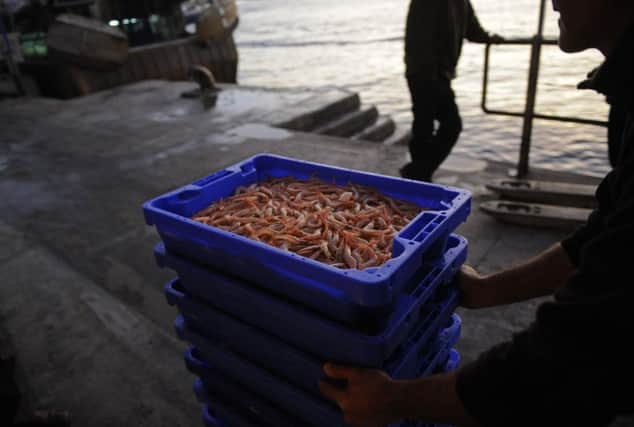Net gain for Scottish fishermen to help meet quotas


It is one of the biggest challenges facing fishermen today – how do you catch the types of fish or shellfish you want, and of the sizes you want, whilst at the same time avoiding non-target fish such as juveniles or species for which there is no quota for?
The whole issue now has more relevance than ever, given that a discard ban will start to be phased-in for our demersal fishers from 1 January 2016. If we can reduce discards (unwanted fish) from our catches in the first place, then we can help mitigate the impact of this new regime on our hardworking fishermen.
Advertisement
Hide AdAdvertisement
Hide AdHappily, it is a challenge that Scottish fishermen have responded to with real imagination and verve.
The degree of success has been astonishing, with discards of cod and other fish having been cut by 60 per cent or more in some fisheries, thanks to the development of innovative new trawl designs.
Over the past 20 years or so, mesh sizes have gradually got bigger so as to allow more juveniles or unmarketable fish to escape.
However, there is an inherent problem in this approach in that the diamond meshes tend to close-up to a degree when a trawl is being towed.
To help combat this, square mesh escape panels have been installed in the top section of the net for many years now. These square meshes maintain their integrity under towing pressure, thus allowing small fish to escape.
Selectivity trials at the start of the 21st century, undertaken with Scottish Government support, quickly showed the effectiveness of these square mesh panels, and they have been universally adopted ever since, often on a voluntary basis by our fishermen.
In more recent years, these new trawl configurations have been refined even further, most noticeably in our prawn (langoustine) fishery. Prawns are one of the mainstays of the Scottish fleet, but from about 2008 onwards the fishery had been coming under increasingly restrictive pressure due to the EU’s Cod Recovery Plan, including the imposition of annual cuts in fishing days.
Whilst these boats were targeting prawns, they were inevitably also catching fish over and above their quota allocation.
Advertisement
Hide AdAdvertisement
Hide AdHowever, these reductions in the number of days that vessels could put to sea were threatening the very survival of the industry.
But rather than just complain loudly while watching the industry suffer, the Scottish prawn catching sector got together and forged an agreement to develop new types of highly selective gear. It was a case of fishermen taking things into their own hands in the face of inflexible micro-management and bad decision-making from Europe.
The idea was simple. If our fishermen could demonstrate to the EU that they were not discarding to any significant degree, then hopefully this would bring to an end the ever-tightening noose of restrictions.
In other words, the challenge was produce prawn trawls that don’t eliminate cod and roundfish catches entirely but keep a balance of fish within the quota available, thus resulting in a discard free fishery.
One of the most successful of the trawls developed is known as the “flip-flap” trawl. It features an inclined panel inside the trawl with a loose flap at the bottom. The majority of cod and other roundfish are directed up the incline and out through an escape panel at the top of the net, whilst prawns move along the bottom section and are collected in the back of the trawl.
The fish that still remain in the net are covered by the boat’s fish quota.
This design, as well as others around the same theme, have been endorsed by Marine Scotland and accepted by the European Commission’s advisory scientific and technical committee. Credit in particular should go to the Scottish Government for their strong support during all stages of design, development and implementation programme, which was aided by European funding.
The development of these trawls goes hand-in-hand with other conservation initiatives pioneered by our fishermen, including real time area closures to protect spawning areas and aggregations of juvenile fish. Indeed, since 2001 there has been a steady upward curve in the fortunes of our fish stocks. Today, the majority of stocks of interest to our fishermen are either in a healthy state or heading in the right direction.
Advertisement
Hide AdAdvertisement
Hide AdThis response from the industry has not been made without considerable pain and effort, and the trawl designs developed should not be seen as a panacea – rather one piece in the overall jig-saw towards a complete solution. But what has been achieved so far is something every fisherman in Scotland can take considerable pride in.
• Bertie Armstrong is chief executive of the Scottish Fishermen’s Federation www.sff.co.uk